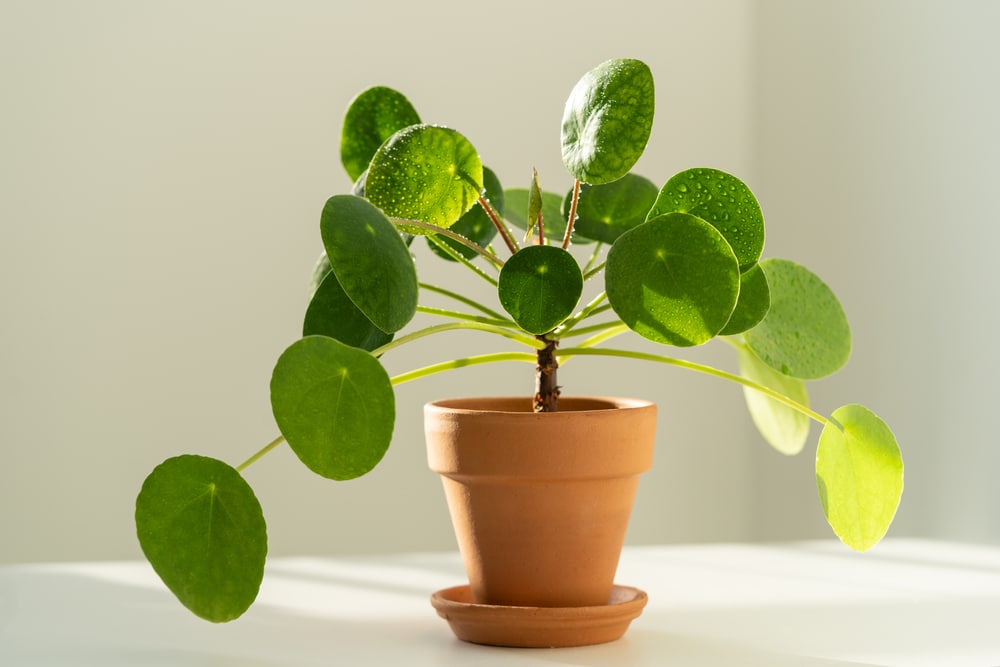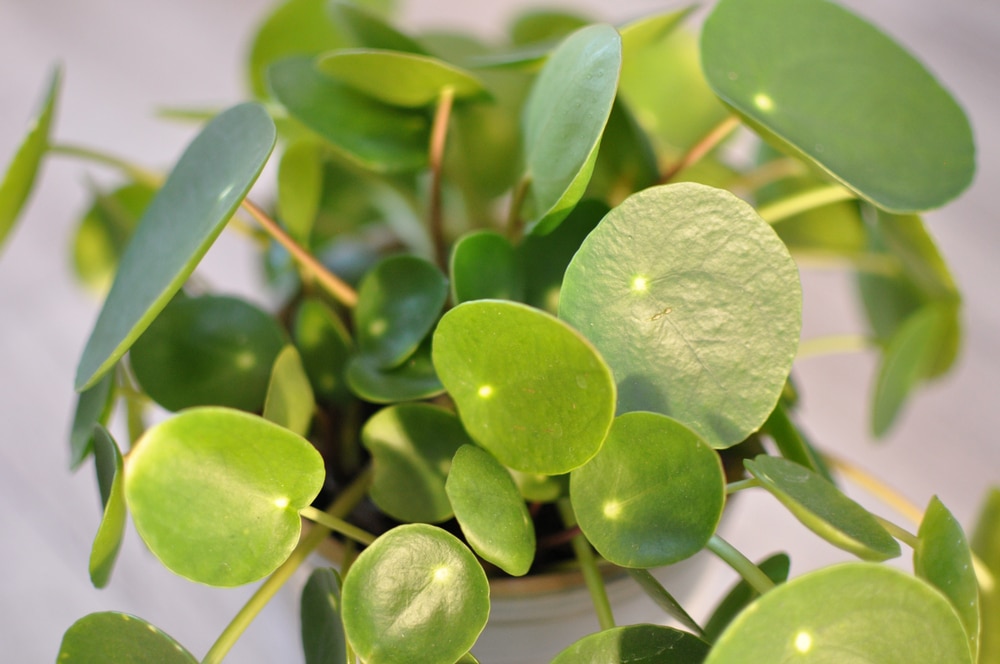One of the most distinctive features of the Pilea plant is its leaves. It has large, slightly cupped, round leaves that are usually bright green. The plant itself makes an excellent centerpiece for living room tables and shelves.
Aside from its unusually beautiful leaves, this plant is forgiving and would survive even if you haven’t had any prior experience with houseplants. So, if you’re a plant parent-to-be or are just considering getting one, a Pilea is an excellent choice.
That being said, there are still some things that could go wrong if not given proper care. Although easy to grow and maintain, it will show when the plant is not happy. One way it does this is by its leaves turning yellow.
Why Are My Pilea Leaves Yellowing?
There are many varieties of pilea, commonly called Chinese money plants, including Bronze Pilea. As the leaves mature, it’s not uncommon for the bottom leaves to turn yellow and die off. This is a natural process that happens as the plant grows. However, if this happens more often than usual or if the entire plant starts to turn yellow, then there could be an underlying problem.
Here are some possible reasons why your Pilea leaves might be turning yellow:
Bacterial Wilt or Other Bacterial Diseases
On a general note, pileas aren’t prone to many diseases. However, since they’re usually grown indoors, they can be more susceptible to pests and diseases than plants grown outdoors.
Bacterial wilt is a common disease among houseplants, and it’s caused by bacteria that clog the plant’s vascular system. As a return, it’ll develop yellow spots on its leaves that could take over the entire foliage.
Unfortunately, bacterial diseases are highly contagious and can quickly spread. Quickly snip off the affected areas of the plant and quarantine it from your other plants to prevent the disease from spreading.
Additionally, you may also consider repotting your pilea in a fresh potting mix and disinfecting your tools and pots to prevent the spread of bacteria.
Too Much Water
Another common reason for yellowing leaves is overwatering. This usually happens to plants that are grown in pots with little to no drainage holes. Check the soil. Is it boggy? If it is, then you’re most likely overwatering your plant.
When plants are overwatered, the roots start to suffocate and rot. Rotten roots have a musky smell and are brown or black in color. If you think your plant is overwatered, the best course of action would be to remove it from its pot and check the roots.
If they’re mushy and smell bad, you’ll need to trim off the rotten roots, replant them in fresh potting mix, and ensure that the pot has drainage holes. Going forward, water your plant only when the topsoil is dry to the touch.
Dehydration
On the other hand, not watering your pilea enough may also pose a problem. If the leaves start to turn yellow and droop, then this could be a sign that your plant is dehydrated.
Underwatering may turn the soil dry and crusty. When the soil is dry, this means that the plant won’t be able to absorb the soil’s nutrients properly, causing the yellowing of leaves. Aside from this, its leaves will curl and wrinkle.
You can always check your soil’s moisture by sticking your finger. However, you can also get a soil moisture meter to make sure that you don’t drown your plant during your watering sessions.
Extreme Exposure to Bright Light
Pilea’s foliage may cause discoloration when placed under too much direct sunlight. If the plant is placed in an area that’s too sunny, it’ll develop yellow leaves with green veins. The yellowing of your plant’s foliage can be because of scorched leaves.
Hence, if you notice that your plant’s leaves are looking a bit pale and the color is uneven, move it to a shadier spot or diffuse the light by placing a sheer curtain between the plant and the window.
Common Pests
Mites, aphids, and mealy bugs are some of the common pests infesting houseplants. These pests are attracted to the plant’s sap, and they pierce the leaves to drink it. As a result, your plant’s foliage will develop yellow spots and eventually turn brown and crisp. You can get rid of most of these pests by hosing down your plant with water or using a cotton swab dipped in rubbing alcohol.
Micronutrient Deficiency
When it comes to the yellowing of foliage, one of the common problems is micronutrient deficiency. This usually happens when the plant isn’t getting enough nitrogen. Oftentimes, plant growers commonly mistake this for fertilizer burn. While they both show similar signs of yellowing leaves, nitrogen deficiency will only affect the new leaves and may cause the plant to curl and turn brown. On the other hand, fertilizer burn will show up on the tips and edges of the leaves.
Sometimes, iron or magnesium deficiency may also cause the same problem. If you notice that your plant’s foliage is turning yellow in between the veins, then this could be a sign of an iron deficiency.
You can always test the soil to understand what nutrients it lacks. You can use a soil test kit or send a sample of your soil to your local extension office.
Pilea Leaves Turning Yellow
A single leaf yellowing might not be a cause for alarm, but if the whole foliage starts to turn yellow, then that’s a different story. If you notice that your plant’s leaves are turning yellow all of a sudden, a close inspection is needed to determine the problem.
Check the soil, check for pests, and see if your plant is getting enough nutrients. By doing so, you’ll be able to save your plant before it’s too late.

